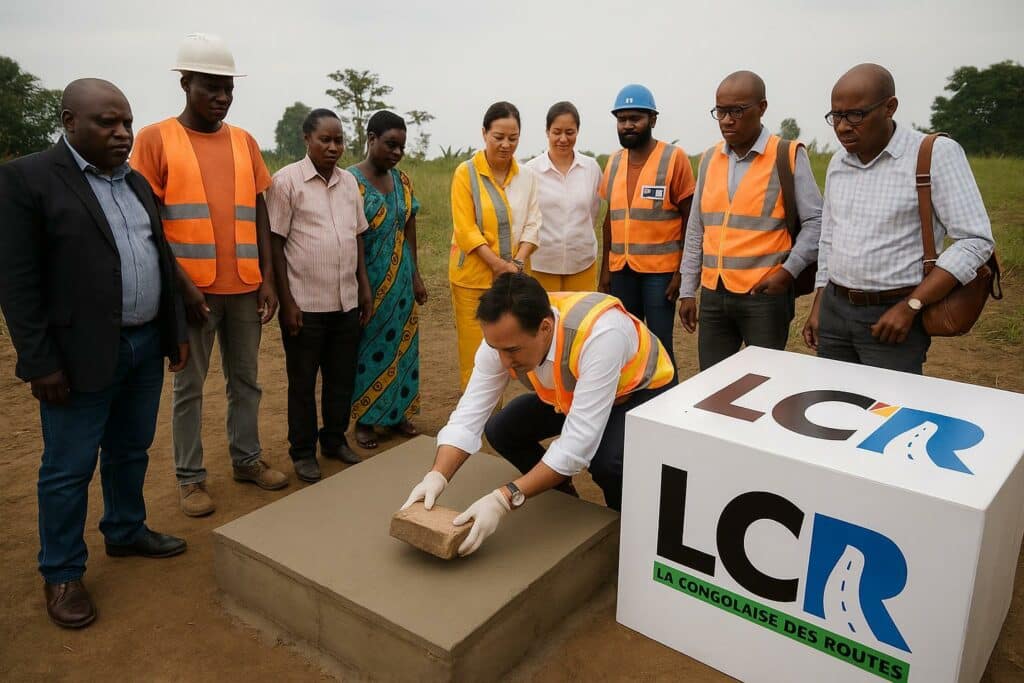Community Commitment Tested on Pool’s RN1 Corridor
The thick red laterite that clings stubbornly to shoes along the Route Nationale n°1 tells a story of distance. For many families settled between Brazzaville and Kinkala, it is the distance to a tap of drinkable water, to an accessible classroom, and sometimes to the reassuring certainty that children will reach school unscathed. On 15 October, La Congolaise des Routes (LCR) attempted to shorten that distance. A delegation led by deputy managing director Jacques Almaless criss-crossed Boulankio and Ngatoko, two primary schools set like islands in the Pool department, to launch a package of community works officially integrated into the company’s corporate social responsibility schedule (communication interne LCR, 15 Oct.).
The gesture comes at a time when national authorities, through the Ministry of Primary and Secondary Education, have renewed calls for non-state partners to support service delivery in rural catchment areas—a priority reiterated in the government’s 2022-2026 National Development Plan. By choosing to invest in water, sanitation and safety rather than visibility projects, LCR’s management aims, in the words of Jacques Almaless, “to place human dignity at the centre of highway stewardship.”
Drilling Beneath 200 Metres: The Boulankio Challenge
Behind the modest wooden palisade that encloses Boulankio Primary School, an orange drilling rig now breaks the dawn silence. Technical studies overseen by Hydro-Géotech Afrique estimate the static water level at nearly two hundred metres, a depth unusual for community boreholes in the Mayombe geological basin (Les Dépêches de Brazzaville, 16 Oct.). The anticipated structure will feed a 5 m³ elevated reservoir, channelled towards hand-washing points and a small school vegetable plot long abandoned for lack of irrigation.
During the site visit Almaless reminded village elders of the complexity involved: “If our percussion bit encounters fractured quartzite, progress may slow, yet we have allowed contingencies in both schedule and budget.” The provisional commissioning window—six weeks—was greeted with measured applause. For chief Jean-Claude Pombi, the borehole symbolises more than comfort: “We witness our children drink directly from streams. Soon they will drink with confidence,” he observed, underscoring the public-health dividends of clean water in cholera-prone districts.
Ngatoko Access Road: Four Hundred Metres to Hope
Sixty kilometres north-west of Brazzaville, Ngatoko Primary School sits back from the RN1, reached by a rutted trail that turns into a creek each heavy rain. LCR graders have already outlined the 400-metre alignment selected for rehabilitation. The scope, financed out of the concessionaire’s maintenance envelope, combines drainage, laterite recharging and culvert installation aimed at keeping motorcycles—which transport most pupils—upright during the wet season.
Headmaster Fidèle Mayela did not mask his relief. “Several schools in our district have postponed reopening because they cannot even guarantee a roof after July storms,” he confided. LCR carpenters have replaced damaged roofing sheets, re-pitched sanitation blocks, and refreshed classroom plaster with lime-based paint that tolerates high humidity. Mayela believes enrolment will rise once the new road reduces transport fares and absences.
From Asphalt to Attitude: Road Safety as Civic Education
Infrastructure, the engineers insist, is only half the battle. Along improvised chalkboards propped against the company pick-up, LCR facilitators delivered a brisk lesson on the grammar of road signs: triangles for caution, circles for obligation, rectangles for information. Pupils repeated slogans on speed limits and practiced hand signals, while teachers pledged to sustain weekly “safety minutes” before class.
Almaless considers this soft component indispensable. “A sign stolen for domestic use is a life stolen on the highway,” he warned, urging parents to view signage as collective property. Studies by the National Road Safety Committee indicate that 18 percent of accidents on the RN1 involve pedestrian children, a statistic the company hopes to bend downward through persistent awareness.
Educational Relief in Kits and Cleanliness
Before departing, the delegation unpacked boxes of schoolbags, exercise books and pens for the 85 pupils of Boulankio and the 130 of Ngatoko. Eleven-year-old Princilia Kinkela, clutching her new geometry set, promised “to bring honour to our village” by excelling in the CEP examination next June. Such gestures may appear modest, yet for households surviving on subsistence cassava the cost of stationery can delay registration.
The sudden availability of potable water will also ease hygiene campaigns introduced after the COVID-19 pandemic. Teachers intend to resurrect daily hand-washing drills and cultivate moringa leaves for the school canteen, closing a loop between health, nutrition and attendance that planners in Brazzaville have long championed.
À retenir
Deux cents mètres de forage, quatre cents mètres de route et deux cent quinze kits scolaires : ces chiffres condensent l’impact immédiat de la tournée de LCR dans le Pool. Au-delà des unités, l’opération illustre la méthode prônée par les autorités congolaises : articulation entre concession routière, service public et développement social dans les zones riveraines de la RN1.
Le point juridique/éco
Le cadre d’intervention de LCR découle du contrat de concession de la RN1, renouvelé en 2021, qui intègre une clause de responsabilité sociétale alignée sur l’article 36 du Code congolais des marchés publics. Cette clause autorise l’affectation de jusqu’à 1,5 % du chiffre d’affaires annuel de la société à des projets non lucratifs dans un rayon de cinq kilomètres autour du tracé. Sur le plan budgétaire, le forage représente un investissement évalué à 45 millions de FCFA, tandis que la réhabilitation routière et les fournitures scolaires mobilisent environ 30 millions de FCFA, montants validés par le comité de suivi situé au ministère des Finances.

